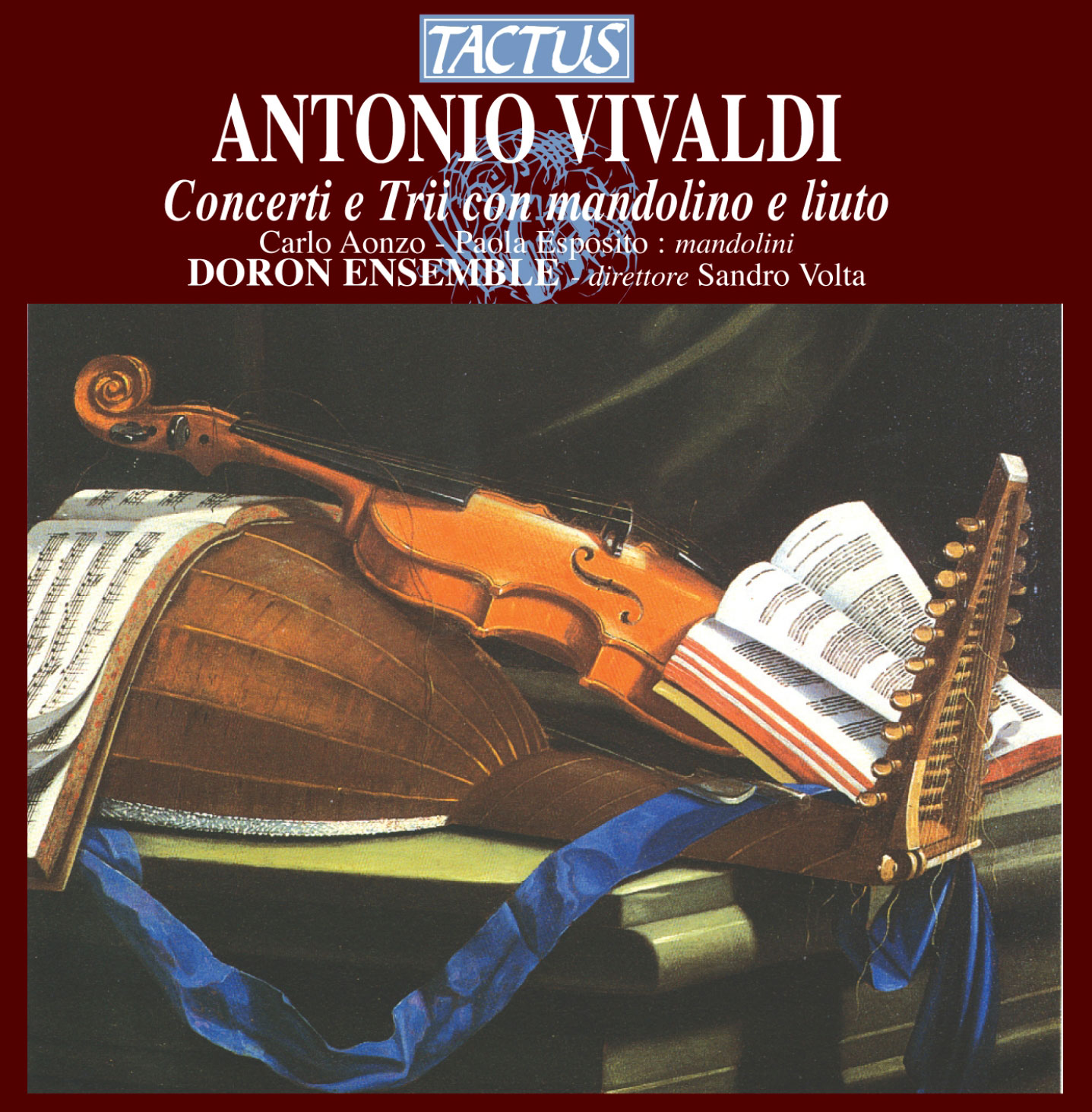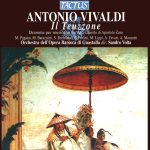VIVALDI ANTONIO
Vivaldi’s interest in plucked string instruments was already manifested in the oratorio “Juditha Triumphans” (which calls for mandolin and theorbo), the “Concerti per molti stromenti”, and “Il Giustino” (calling for the salterio). This interest is further confirmed by pieces in manuscript preserved in the Fondo Giordano of the Biblioteca Universitaria Nazionale in Turin. It is difficult to establish whether these composi tions were an effort on the part of the Venetian master to expand the horizons of his research into the multiplicity of timbres, or if instead they were merely occasional digressions dictated by the need to satisfy the demands of patrons who were essential to aiding the composer in his operatic enterprises. In fact, the Marquis Bentivoglio, a “political” figure and a point of reference for Vivaldi’s frenetic theatrical activities, was an amateur player of the mandolin. Still more mysterious is the composer’s relationship with the lute and with important musical figures at the court of Dresden. A connection has often been hypothesized between the celebrated virtuoso Silvius Leopold Weiss and Vivaldi. But even a superficial study reveals an enormous difference between the idiomatic intentions of their relative writings. Indeed it would appear that the lute playing of the German composer had little or no influence on Vivaldi’s music, strongly marked as it was by a sense of monody and substantially indifferent to the complex contrapuntal texture and the harmonic refinement typical of the lute vocabulary of the eighteenth centuryVivaldi’s interest in plucked string instruments was already manifested in the oratorio “Juditha Triumphans” (which calls for mandolin and theorbo), the “Concerti per molti stromenti”, and “Il Giustino” (calling for the salterio). This interest is further confirmed by pieces in manuscript preserved in the Fondo Giordano of the Biblioteca Universitaria Nazionale in Turin. It is difficult to establish whether these composi tions were an effort on the part of the Venetian master to expand the horizons of his research into the multiplicity of timbres, or if instead they were merely occasional digressions dictated by the need to satisfy the demands of patrons who were essential to aiding the composer in his operatic enterprises. In fact, the Marquis Bentivoglio, a “political” figure and a point of reference for Vivaldi’s frenetic theatrical activities, was an amateur player of the mandolin. Still more mysterious is the composer’s relationship with the lute and with important musical figures at the court of Dresden. A connection has often been hypothesized between the celebrated virtuoso Silvius Leopold Weiss and Vivaldi. But even a superficial study reveals an enormous difference between the idiomatic intentions of their relative writings. Indeed it would appear that the lute playing of the German composer had little or no influence on Vivaldi’s music, strongly marked as it was by a sense of monody and substantially indifferent to the complex contrapuntal texture and the harmonic refinement typical of the lute vocabulary of the eighteenth century.
Tracklist
Vivaldi, Antonio
Concerto for 2 Mandolins in G Major, RV 532
1 - I. Allegro (4:50)
2 - II. Andante (4:22)
3 - III. Allegro (3:42)
Trio Sonata in C Major, RV 82
4 - I. Allegro non molto (3:03)
5 - II. Larghetto lento (4:17)
6 - III. Allegro (2:36)
Chamber Concerto in D Major, RV 93
7 - I. Allegro (3:08)
8 - II. Largo (4:04)
9 - III. Allegro (1:50)
Trio Sonata in G Minor, RV 85
10 - I. Andante molto (4:35)
11 - II. Larghetto (2:31)
12 - III. Allegro (2:19)
Mandolin Concerto in C Major, RV 425
13 - I. Allegro (2:54)
14 - II. Largo (2:04)
15 - III. Allegro (2:06)
Sonata No. 2 in C Major, Op. 13, RV 56, "Il pastor fido"
16 - Sonata No. 2 in C Major, Op. 13, RV 56, "Il pastor fido": I. Preludio: Adagio (3:56)
- Composer: VIVALDI ANTONIO
- Performers: DORON ENSEMBLE – direttore Sandro Volta – Solisti: Carlo Aonzo, mandolino – Paola Esposito, mandolino; Sandro Volta, liuto mandolino lombardo; Patrizia Del Ciotto, violino – Barbara Boganini, violino; Sonia Giacalone, violoncello.
- Historical Period: Late Baroque
- Code: TC 672217
- Edition: 2000
- Barcode: 8007194101843
- Set: 1
- Total tracks: 16
- Total duration: 00:52:19






